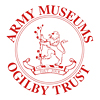

(L to R) Queen's South Africa Medal with clasps 'Cape Colony', 'Transvaal', 'Wittebergen'; King's South Africa Medal with clasps 'South Africa 1901', 'South Africa 1902'; British War Medal; Allied Victory Medal; Long Service and Good Conduct Medal
James was born between October and December 1881 in Birmingham. His father was called Charles and his mother was Mary. James came from a large family, Richard, Isabel and Charles were older than him; Mary, William, Julia (or Jane), Joseph (or John), Henry, Harold, James and Nellie were all younger.
When George was 17 he tried to enlist into the Manchester Regiment. Charles had been born in Manchester and this may have been why James wanted to serve in this particular Regiment. On James' first try he was told the Regiment was full, so he joined the East Lancashire Regiment on the 16th August 1898. After a month James was able to transfer to the Manchester Regiment. He was given the service number 5461 and assigned to the 2nd Battalion, who had returned to Manchester by January 1899.
In October 1899 the Boer War broke out in South Africa. The British struggled to defeat the Boer Army and more soldiers were sent as the war dragged on. The 2nd Battalion was one of these units; it arrived in South Africa in April 1900.
James had been promoted exceptionally fast. By this time he had reached the rank of Corporal, and served in A Company. He stayed with the 2nd Battalion throughout their time in South Africa. James and the 2nd Battalion were present at the fighting around Wittebergen in July 1900, and then served in small actions aimed at protecting railway lines and at stopping Boer soldiers from moving freely around the Transvaal and Cape Colony.
The war ended in May 1902 and James returned to the UK with the 2nd Battalion. We don't know the details of James Army career after this point. He was still with the 2nd Battalion between 1904 and 1906 when he was a member of the part of the Battalion stationed on Alderney (most of the Battalion was based on the larger Channel Island of Guernsey).
By 1911 James had reached the rank of Colour Sergeant and was stationed at the Manchester Regiment Depot in Ashton-under-Lyne. He was a member of the 3rd Battalion; this meant he was responsible for training Reservists when they joined the Army and during their annual training period. James remembered that he 'spent many happy times amongst the most social members of a Sergeant's Mess one could meet in a lifetime'.
By this year James was married, although we don't know anything about his wife.
When the First World War broke out James was a member of the 3rd Battalion. He went with this unit to Cleethorpes on the Humber Estuary. It had two roles, to train new recruits, and to defend against a German invasion.
James had been promoted again, to Warrant Officer Class 2, by September 1916. At this time he was assigned to the 11th Battalion of the Manchester Regiment and sent to France to join them.
James' career was soon to go in a different direction. On the 3rd December 1916 he was commissioned as a 2nd Lieutenant into the 20th Battalion. James' service in the ranks did not go unrecognized, though. In 1917 he was awarded the Long Service and Good Conduct Medal.
We don't have many details of James' service during the rest of the war. He was awarded the Military Cross on the 1st January 1918, but there is no citation that tells us it was awarded for a particular act of bravery. James was promoted to Lieutenant on the 3rd June and by November he was an Acting Captain. On the 1st December James returned to the 2nd Battalion and stayed with them as they returned to the UK. The Battalion was based at Blackdown near Aldershot when James retired on the 18th November 1919.
As a civilian James returned to the Birmingham area. During the late 1920s he was living at 1 Woodfield Road in Balsall Heath. James had been a member of the Old Comrade's Association (OCA) since around 1910, and had attended the very first reunion dinner. James was a keen contributor to the Regimental Gazette but he was only ever able to attend 3 reunions. He stayed connected to Old Comrades in Manchester through his friend Frank Hayward, who lived in Stockport. Frank's medals are also in the Museum of the Manchester Regiment collection.
By 1950 James and his wife were living at 97 Crane's Park Road in Sheldon, Birmingham. They planned to attend the 1951 OCA Reunion with their son on the 17th February, but were 'prevented from coming to Manchester'. We believe this was due to a strike by railway workers at around that time.
That same year James went into Selly Oak Hospital in Birmingham, where he died suddenly on the 28th September. He was 69 years old. His medals were donated to the Museum of the Manchester Regiment later in 1951.




